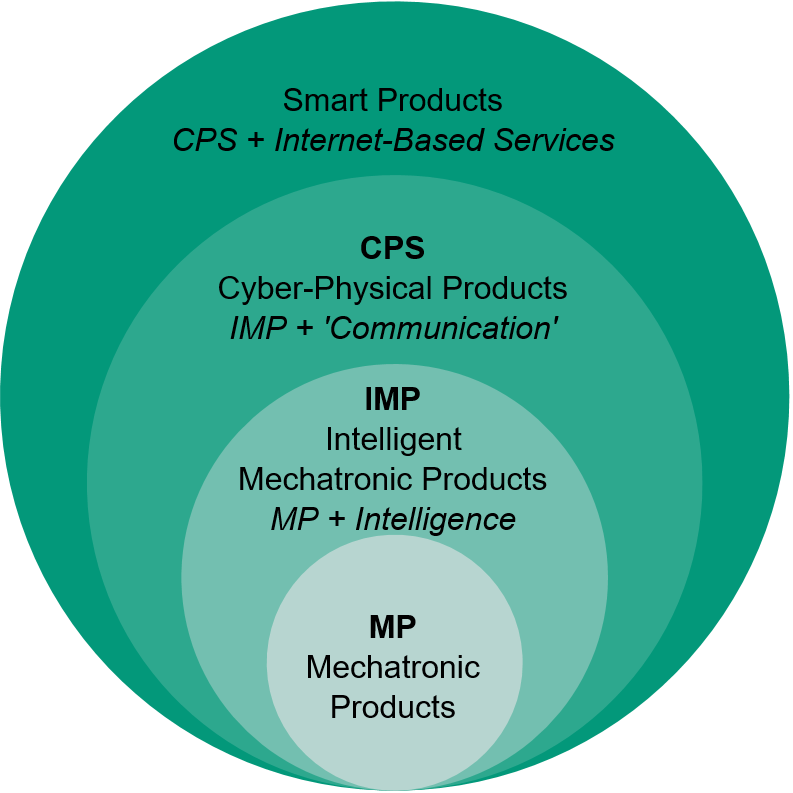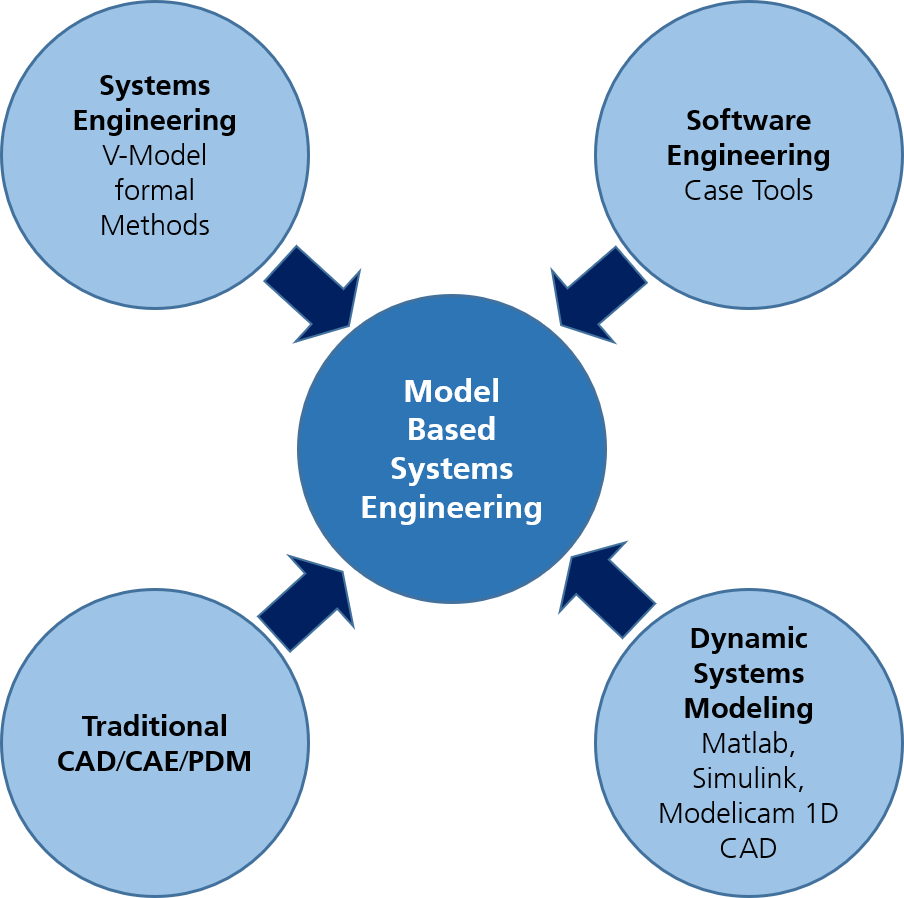
MBSE for Cyberphysical Production Systems

Cyberphysical production systems (CPPS) consist of autonomous subsystems that are interconnected and cooperate with each other at all levels of production. They are thus cyberphysical systems (CPS) used in the context of supporting production processes. CPSs differentiate themselves from their precursors of mechatronic products and smart mechatronic products primarily through their exchange with other CPSs, but do not necessarily provide internet-based functionalities of smart products.
Due to the cyberphysical communication of CPS, these systems and their development processes are inherently even more complex than the already strongly established mechatronic systems. In order to cope with this complexity, methods and tools of model-based systems engineering (MBSE) are increasingly applied.


MBSE provides capabilities for system environmental analysis, system definition and derivation, system interaction modeling, and systems lifecycle engineering and model evaluation. MBSE enables integrated system modeling with open interfaces for system development. Leveraging MBSE development capabilities for end-to-end modeling from development through operation to end-of-life can not only improve systems under development through the use of real-time operational data, but also significantly improve development models over time. In order for development models that have been created and planned with MBSE integrated to be used during later lifecycle phases, model development must consider networking as the key driving factor of CPPS development. This requires that MBSE models provide interfaces for co-simulation and multi-domain system modeling through a variety of sub-models, and enable comparison of predictive properties with real operational data.
Validating the performance of predictive models throughout the system life cycle through applications in digital twins enables feedback to the model. Machine learning or other AI algorithms can be used to analyze gaps between model predictions and operational system behavior to automatically adjust and improve system models used in MBSE. Providing a digital thread enables direct feedback from real/digital system comparison into the set of MBSE models used to create an overall system model, enabling more accurate and holistic modeling of future systems under development and reuse of improved development models for subsequent system innovation cycles.
Fraunhofer IPK advises and supports companies in the introduction of MBSE for the planning and operation of production plants, drawing on extensive experience in the field of MBSE and Industry 4.0
 Fraunhofer Institute for Production Systems and Design Technology
Fraunhofer Institute for Production Systems and Design Technology